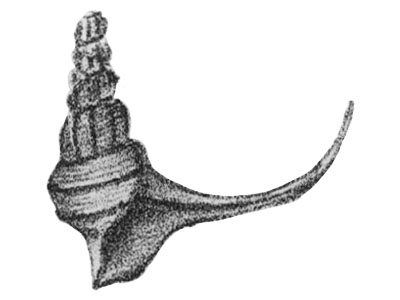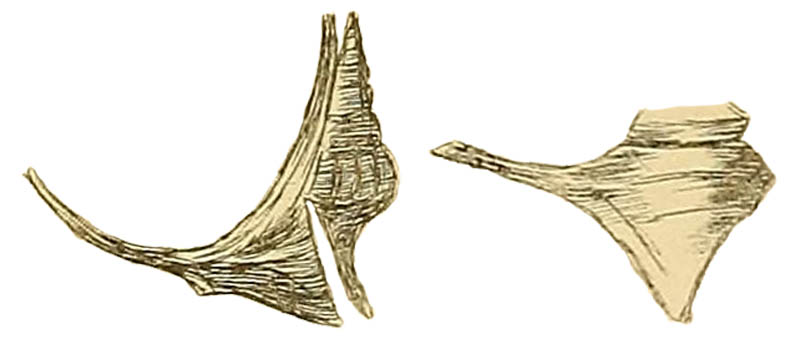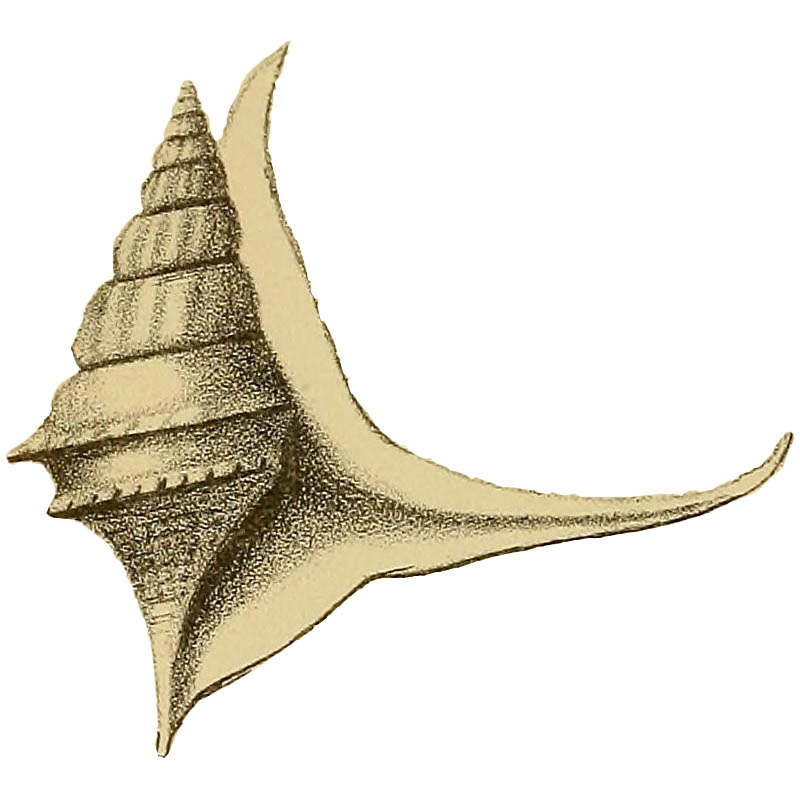|
edit SideBar
|
Species / Dimorphosoma Opeatochila
Stromboidea
Original Description of Dimorphosoma opeatochila by Gardner, 1875, p. 399:
- "Shell very elongated; whorls rounded, probably nine; striated; keels entirely obliterated, except on the body-whorl; ribs ten or eleven on each whorl, reaching to the sutures. Last whorl having two keels of nearly equal prominence, striated between. Wing simple, long, narrow, awl-shaped; aperture narrow; anterior canal short, outer lip sinuous."
Locus typicus: Lyddenspout, between Folkestone and Dover, Kent County, South East Region, England
Stratum typicum: "cast bed of the Grey Chalk", Middle Cenomanian, Acanthoceras rhotomagense zone, Turrilites costatus subzone; upper Cretaceous
Dimorphosoma opeatochila Gardner, 1875, pl. VII, fig. 9
Comment Gardner, 1875, p. 400:
- "This shell differs from the figures of D. calcarata, composita, and stenoptera of German authors in the length of the wing and want of ribs crossing the keels on the last whorls. It was found in the cast bed of the Grey Chalk, at Lyddenspout, between Folkestone and Dover, and is described from a single specimen."
History and Synonymy
1875
Dimorphosoma opeatochila Gardner, 1875, pl. XII, figs. 23, 24
1880
Helicaulax opeatochila in Gardner, 1880, pl. III, fig. 3
Gardner, 1880, p. 52:
- "Shell small, length 23 mm.; spire elongated, angle 38° ; whorls 8 or 9, moderately convex; sutures distinct; markings, about ten rather obliquely inclined finely striated ribs on each whorl of the spire; body-whorl with two angular and equal strongly tuberculated keels, below which are numerous tuberculated striae; posterior canal same length as spire, attached to at least four whorls; apex free and pointed; outer lip expanded laterally in a single process, ending in a long awl-shaped digit; anterior canal short.
- The figure is restored from several specimens. The species strongly resembles H. ornata of D'Orbigny, but is smaller in size, and has more salient keels, and less pronounced tubercles (see also Geol. Mag. 1875, Dec. II. Vol. II. Pl. VII. Fig. 9; and Pl. XII. Figs. 23 and 24). It is found in the " cast bed " of the Grey Chalk near Dover, where it is by no means common. Specimens are usually very indistinct and broken."
References
- Gardner, J.S. (1875). On the Gault Aporrhaidae. The Geological Magazine. New Series. Decade II, Vol.II(No. II): 49-56,Pl. III, 124-130, Pl. V, 198-203, Pl. VI, 291-298, Pl. VII, 392-400, Pl. XII., available online at https://biodiversitylibrary.org/page/32504029
- Gardner, J. S. (1880). Cretaceous Gasteropoda. Geological Magazin, New Series. Decade II, Vol. II, 49-55, pl. III., available online at https://www.biodiversitylibrary.org/page/30757547
|



